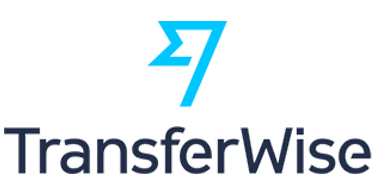Natural language processing usually represents a complicated computer science-based problem as a result of the complexities associated with human languages. Though humans find it easy to handle any language and multiple languages simultaneously, it is the ambiguity and imprecise nature of these languages that leave computers with a difficult path to interpret and comprehend them. This article is an overview of PhD topics in natural language processing. Let us first start with an outline on natural language processing,

Outline of Natural Language Processing
- Languages can be considered to be multidimensional because there are two or more words with same meanings or same word with two or more meanings in different contexts
- The hierarchical arrangement of a language starts with a letter which is built to form a word which further forms sentences and thus a complete document
- The context words of choice and order are extremely important to convey the correct meaning since a small change can lead to a big difference.
Therefore, here are the complexities that arise with system training and interpretation for different languages. For example, considering search over web, auto-complete and autocorrect aspects complete the predictions of what your type with few initial characters that you enter. In this way, the machine has to be trained to project itself correctly regarding any language.
As we are in the field of research in advance to PhD topics in natural language processing for the past 10 years, we have gained huge expertise and knowledge about the system and its functioning. You shall reach out to our experts for in-depth research guidance and ultimate project support in natural language processing. Let us now look into NLU, NLG, and NLP in detail
Difference between NLP, NLU, and NLG
- NLP or natural language processing
- NLP refers to the computer’s ability to read a language.
- It is also referred to as the process which converts a raw text into a structured data form
- NLU or natural language understanding
- The NLP reading aspects are covered using NLU
- Profanity filters, detecting entities and sentiment, classification of topics are its features
- NLG or natural language generation
- NLG is associated with computer language writing
- Structured data is turned into text using NLG
For technical support along with advanced project assistance in data collection, algorithm writing, conducting surveys, making analysis, in-depth research, real-time code implementation, simulation, paper publication, thesis writing, natural language processing journal list and many more in NLP projects you can get in touch with our experts who have got huge experience and world-class reputation among researchers all around the world. Let us now talk about the merits of NLP,
Benefits of Natural Language Processing
- Huge unstructured data sources can be structured using NLP
- Reliable and trustworthy customers and their associated profits can be identified and understood
- The generalists can also reach out to solutions for their questions
- Customer complaints reduction by proactive trend identifications in establishing communication with customers
- The root cause of many important issues can be instantly identified
- Multiple languages, their slang, and jargon can be understood
- Fraudulent user behavior can be recognized and classified efficiently
Due to all these reasons, natural language processing has become one of the significant topics of research and real-life application. Engineers at PhD topics in natural language processing have acknowledged and standardized many of the concepts and methodologies based on NLP. So you can reach out to us for all kinds of support with respect to your NLP projects. Let us not talk about NLP concepts
Important Concepts in Natural Language Processing
- Converting speech to text and vice versa
- Conversion of commands in voice to text and text to voice using NLP
- Extracting context
- Structured data extraction out of text sources
- Categorising content
- Summarizing documents based on languages by indexing, searching, detecting duplicates, and alerting about contents
- Analysing sentiments
- Mood and sentiment identification from large texts thus obtaining subjective opinions (opinion mining and average sentiment analysis)
- Modelling and discovery of topics
- Optimizing, predicting, and analyzing texts by accurately capturing the themes and meanings
There are multiple testing tools, new algorithms, validation processes, and techniques associated with these concepts. To get detailed technical explanations and proper notes on these aspects of NLP concepts and methods you can check out our website or contact our experts at any time. We function 24/7 to assist you. Let us now look into the constraints associated with NLP
What are the main challenges of natural language processing?
- Ambiguity of the languages is the major cause of difficulty in NLP machines
- The usage of a particular word as a noun, verb, and adjective is ambiguous
- At times the meaning to be interpreted from a sentence also poses a certain degree of ambiguity
- The languages used in social media like chat groups or out of standard which is also a reason for NLP being very hard
- The issues of segmenting a word is also the cause of concern
Despite the usefulness of NLP, these are the variety of problems associated with it. Since our experts have delivered several successful PhD topics in natural language processing, we are certainly able to solve all these problems. We will now explain to you the ways of approaching the NLP problem
How do you approach problems in NLP?
- The first step is data collection followed by Data cleansing
- A proper method has to be used in representing data after which classification and inspection are performed
- Vocabulary structure has to be accounted for in the next step after which the semantics is leveraged
- End-to-end approaches are used in leveraging syntax
For coding algorithms and programming languages used in various steps involved in obtaining a solution to an NLP problem as stated above, you can contact our technical support team. Let us now see more about the NLP algorithms.
Effective algorithms for NLP
The following are the important NLP algorithms used in data classification
- Training samples based
- Supervised
- RNN (LSTM, Recursive NN, Gated Recurrent Network) and GAN
- CNN (AlexNet, Unet, VGG, GoogLeNet and ResNet) and TDSN
- Unsupervised (DBN, DTN, DeepInfoMax, and Autoencoders)
- Supervised
- Combination based
- Ensemble– multiple base model integration
- Embedded– classification and dimension reduction joint optimization
- Hybrid– output of the convolution layer is parsed as input to the other architecture based on deep learning
- Joint AB based DL– a combination of two different types of pooling (max and attentive pooling) for optimal feature extraction
- Transfer learning –a trained model for a particular type of problem over the other similar one
- Integrated– CNN output is passed as input (to other DL architecture)
You can get a better description and explanation of NLP datasets and the excellent computer languages for Natural Language Processing projects from us. By providing a proper comparative analysis, we help you do the best NLP project work. Let us now discuss the benchmark NLP datasets below,
Benchmark datasets for natural language processing
All the NLP benchmark data sets can be classified into the following three categories,
- Real-world datasets
- Data obtained from different kinds of real-world circumstances and experiments from this dataset
- Synthetic datasets
- This data is generated artificially by mimicking the real-world patterns
- It can be used in place of real-world data
- These datasets are usually preferred in the Healthcare sector where privacy matters and in cases where a huge amount of data is needed
- Toy datasets
- This dataset is used for the purposes of demonstrating and visualizing
- This dataset is generated artificially and real-world data pattern representation is not needed
Talk to our experts or visit our website for more details on these datasets. The following are the common data associated with different tasks of natural language processing
- Text summarisation
- CNN, DM, and DUC
- Question Answering and Generation (reading comprehension)
- SQuAD, ARC and CliCR
- CNN, and NewsQA
- RACE, Quasar and SearchQA
- NarrativeQA and story cloze test
- Sentiment analysis
- IMDB reviews and SST
- Yelp reviews and subjectivity dataset
- Semantic role labeling
- Preposition bank and OneNote
- Natural language inference
- SNLI Corpus
- MultiNLI
- Classification of text
- 20 NewsGroup and DBpedia
- Semantic parsing
- WikiSQL and ATIS
- AMR parsing
You can get an advanced description of these datasets, their use cases, merits, and demerits associated with them, once you get in touch with us. By providing proper practical descriptions and easy-to-understand explanations we are here to help you out in using all kinds of datasets. In this regard let us now discuss dataset preparation below.
How do we prepare for datasets?
- The problem to be solved, type of data needed, and its amount are the prerequisites for creating a dataset
- Creation of appropriate portions for training and verification is the next step
- Next, trained datasets are utilized in model training to establish a connection between input and output
- The intelligence of the machine is assessed using a test dataset to determine the operation of the trained model over new test samples
- Data is then prepared where the format of data is made understandable and simple
These are the important steps involved in preparing NLP datasets. Our analysts are highly trained and qualified in handling multiple cases related to dataset preparation so we can conduct deep analysis over them. Let us now look into the important NLP open-source frameworks,
Open Source Frameworks for NLP
- GloVeand FastText
- Pre-trained word vectors
- Word2Vec
- CBOW and Skip – Gram
- Transformers
- Framework – PyTorch
- PTMs – XLNet, RoBERTa, BERT, and GPT – 2
- Flair
- Framework – PyTorch
- PTMs – ELMo, GPT, XLNet, BERT, and RoBERTa
- Fairseq
- Framework – PyTorch
- PTMs – English LM, RoBERTs, and German LM
- fastNLP
- Framework – PyTorch
- PTMs – GPT, RoBERTa
- AllenNLP
- Framework – PyTorch
- PTMs – ELMo, GPT, BERT
- UnitLMs
- Framework – PyTorch
- PTMs – unitLM V1 and V2, MiniLM and layout LM
- Chinese BERT
- Framework – PyTorch
- PTMs – RoBERTa and BERT
- RoBERTa
- Framework – PyTorch
- BERT
- Framework – TF
- PTMs – BERT and BERT – wwm
In order to get the perspective of world-class research experts and experienced analysts, you shall contact us at any time. Let us now have a look into the recent natural language processing research topics below,
Trending PhD topics in Natural Language Processing
- Making named entities and answer selection
- Expanding queries, data retrieval, and classification of the type of questions and answers
- Machine learning sentiment analysis and medical natural language processing
- Sentiment analysis based on nature-inspired optimization algorithms and smart approaches for the generation of text
Out of all these PhD topics in natural language processing, we are very much concerned with the NLP in the medical text which has the following aspects
- Source of text
- Tweets, free text, and pathology reports
- Advanced medical event and WebMD patient reviews
- Biomedical text
- Electronic medical records
- Tasks involved
- Discovery and recognition of attributes and de-identification
- Extracting the relationship between different attributes and segmentation
- Establishing temporal indexing and relation
- Annotation and detecting ADR and AME
- Embedding
- Word embedding
- GloVe, Lemmas, and Domain-specific
- Word2Vec and contextual WE (ELMo and Flair)
- Sense embedding
- Unified medical language system
- Concept embedding
- med2vec
- Word embedding
- Challenges
- Difficulties in extracting medical entity
- Medical text mining (hard)
- Key annotation constraints in medical texts
- Medical corporation – identification lacking
These are the important areas of research in NLP. What programming language does NLP use? To get expert answers to such frequently asked questions you can check out our website on PhD topics in natural language processing or instantly contact us. We are here to provide you with all kinds of support for your NLP research projects.





















